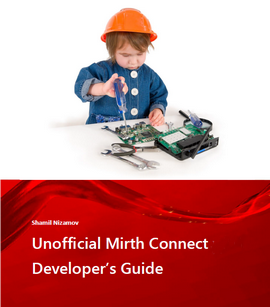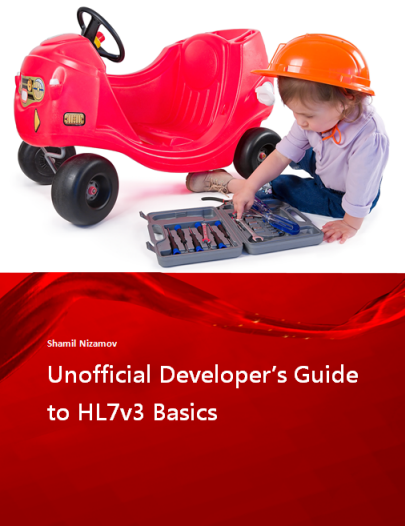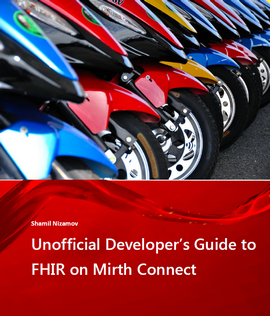




Published: May 22, 2022
Updated: Sep 03, 2022
Number of pages: 250
Format: PDF
Download size: 8.5Mb
Price: $35.99 USD
By clicking this button you agree with the Terms of Services. GERMANY: no invoice is sent.
Click "Return to iSARP" to complete the purchase.
Contact me first if you have not landed back to the download page and/or have not received an email with the download link.
Mirth Corp, before it was acquired by QSI, described Mirth Connect platform as "the Swiss Army knife of healthcare integration engines, specifically designed for HL7 message integration. It provides the necessary tools for developing, testing, deploying, and monitoring interfaces. And because it's open source, you get all of the advantages of a large community of users with commercial quality support."
As you may know, Mirth Connect is rebranded and called "NextGen Connect Integraton Engine" now. Quality Systems Incorporated (QSI), the parent company of practice management and EHR company NextGen Healthcare positions Mirth Connect as "NextGen Connect Integraton Engine is an open source, vendor-agnostic interface engine that supports connections between a number of facilities and makes it easy to transform non-standard data into standard formats. With NextGen Connect Integraton Engine, an organization can eliminate the "cost per interface" model of a P2P solution. It can translate scalability and flexibility into profitability."
This book introduces readers to Mirth Connect interface engine 4.x version family. As you read this book, you will become confident enough to start building your own healthcare data exchange interfaces.
By implementing a fictitious Eligibility Query Service, this book covers topics on XSL Transformation, database connection pool, channels acknowledgements and development of Mirth Connect extensions. Other topics include XML schema and Schematron validation, sending objects via the ActiveMQ Message Broker and Web services.
Each chapters explains a single Mirth Connect channel and provides step-by-step instructions how to configure channel's settings, channel's source and destination connectors, and develop transformation rules.
Content
| Chapter 1 | Getting Started |
| Chapter 2 | What is a Channel? |
| Chapter 3 | Creating a Channel |
| Hover to zoom the diagram | |
| Chapter 4 | Generic Eligibility Service Introduction |
| Chapter 5 | Query Sender Channel |
| Chapter 6 | HL7v2 to HL7v3 Transformer Channel |
| Chapter 7 | Data Logger Channel |
| Chapter 8 | HL7v3 Verification Channel |
| Chapter 9 | Response Sender Channel |
| Chapter 10 | HL7v3 to HL7v2 Transformer Channel |
| Hover to zoom the diagram | |
| Chapter 11 | Acknowledgements Introduction |
| Chapter 12 | HL7v3 ACK Channel |
| Chapter 13 | HL7v3 Verification Channel |
| Chapter 14 | HL7v2 to HL7v3 Transformer Channel ACK |
| Chapter 15 | Query Sender Channel ACK |
| Chapter 16 | DICOM Storage SCU |
| Chapter 17 | DICOM Storage SCP |
| Chapter 18 | Debugging JavaScript in Mirth Connect |
| Chapter 19 | Utilizing JMS (Java Message Service) |
| Chapter 20 | Polling Web Services |
| Chapter 21 | Building Extensions |
| Chapter 22 | Tuning Mirth Connect |
As FHIR, HL7v2, CDA and HL7v3 RIM certified, having more than 10 years of health care information systems and software design experience, I can help you with every phase of HL7 interface development projects, starting from requirements elicitation, development using interface engines, testing, and to going live.
For details please check my HL7 Consulting page.
Related Books
 |
 |
 |
|